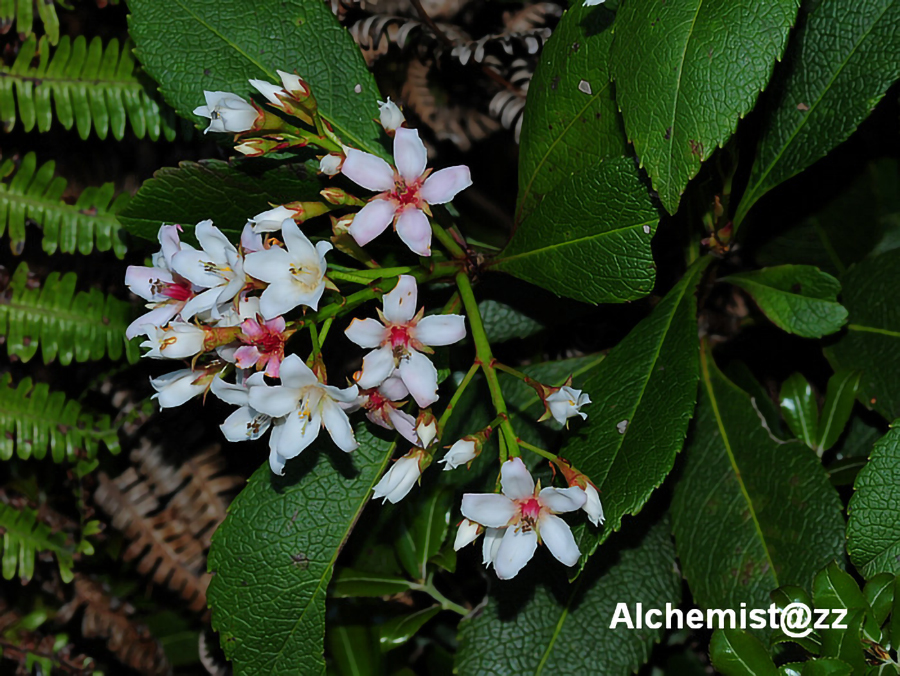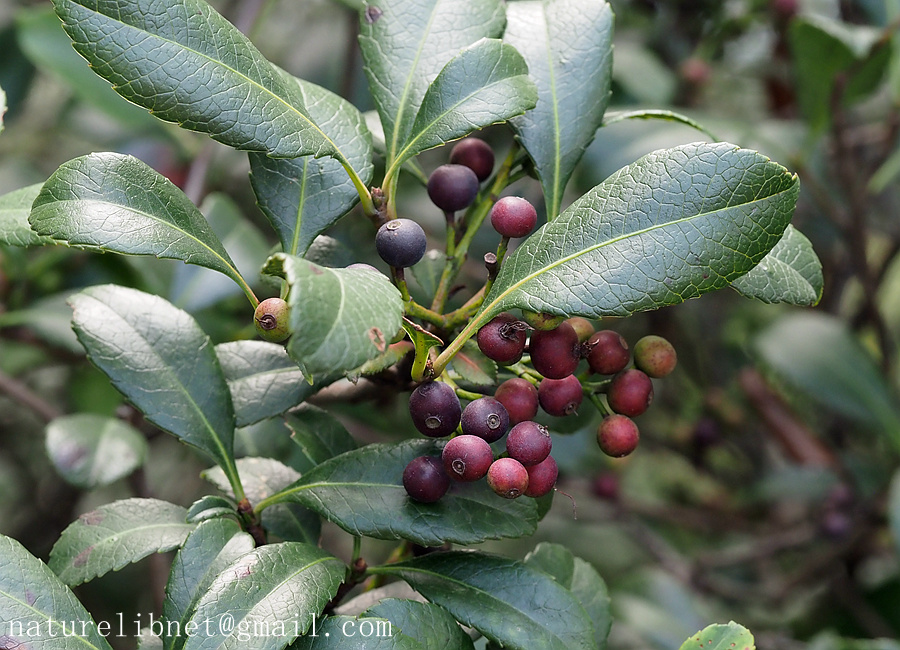- Scientific Name: Rhaphiolepis indica (L.) Lindl.
- Ref: Bot. Reg. 6:t.468. 1820
- Synonyms:
- Crataegus rubra Lour.
- C. sinensis Loisel.
- Laurus umbellata Thunb.
- Mespilus sieboldii Blume
- M. sinensis Poir.
- Opa integerrima (Hook. & Arn.) Seem.
- O. japonica (Siebold & Zucc.) Seem.
- O. mertensii (Siebold & Zucc.) Seem.
- O. metrosideros Lour.
- Pyrus delacourii (André) M.F.Fay & Christenh.
- Rhaphiolepis delacourii André
- R. gracilis Nakai
- R. impressivena Masam.
- R. indica var. umbellata (Thunb.) H.Ohashi
- R. integerrima Hook. & Arn.
- R. japonica Siebold & Zucc.
- R. liukiuensis (Koidz.) Nakai
- R. loureiroi Spreng.
- R. mertensii Siebold & Zucc.
- R. minor (Makino) Koidz.
- R. parvibracteolata Merr.
- R. rubra (Lour.) Lindl.
- R. rugosa Nakai
- R. sinensis (Poir.) M.Roem.
- R. umbellata (Thunb.) Makino
- English Common Name: Hong Kong hawthorn, Indian hawthorn, India hawthorn
- Chinese Common Name: 石斑木 shíbān∙mù, 车轮梅 chēlún∙méi, 凿角 [粤]zok6 gok3
- Japanese Common Name: シャリンバイ [車輪梅] sharinbai
- Family: Rosaceae
- Genus: Rhaphiolepis
- Distribution: Slopes, roadsides, thickets at stream sides; 700–1600 m. Anhui, Fujian, Guangdong, Guangxi, Guizhou, Hainan, Hunan, Jiangxi, Taiwan, Yunnan, Zhejiang [Cambodia, Japan, Laos, Thailand, Vietnam].
Shrubs, rarely small trees, to 4 m tall. Branchlets purplish brown when young, grayish brown when old, terete, initially brown tomentose, glabrous when old. Petiole 0.5–1.8 cm or nearly absent, slightly brown tomentose or, subglabrous; stipules caducous, lanceolate, sparsely brown tomentose, apex acuminate; leaf blade ovate, oblong, rarely obovate, oblong-lanceolate, narrowly elliptic or lanceolate-elliptic, (2–)4–8 × 1.5–4 cm, leathery, veins prominent abaxially, reticulate veins conspicuous abaxially and conspicuous or not adaxially, abaxially pale, glabrous or sparsely tomentose, adaxially lustrous, glabrous, base attenuate, margin crenulate, serrate, or obtusely serrate, apex obtuse, acute, acuminate, or long caudate. Panicle or racemes terminal, many- or few flowered; peduncle and pedicels rusty tomentose; bracts and bractlets caducous, lanceolate or narrowly lanceolate, 2–7 mm, both surfaces initially brown tomentose, densely so at margin, soon glabrescent, apex acuminate. Pedicel 0.5–1.5 cm, initially brown tomentose, soon glabrescent. Flowers 1–1.3(–1.5) cm in diam. Hypanthium tubular, brown tomentose at margin and on both surfaces or glabrous. Sepals triangular-lanceolate or linear, 4.5–6 mm, both surfaces slightly brown tomentose or glabrous, apex acute. Petals white or pinkish, obovate or lanceolate, 5–7 × 4–5 mm, pubescent basally, apex obtuse. Stamens 15, ca. as long as or shorter than petals. Ovary glabrous, 2- or 3-loculed, with 2 ovules per locule; styles 2 or 3, connate at base, subglabrous. Pome purplish black, globose, 5–8 mm in diam., glabrous; fruiting pedicel 5–10 mm, glabrous; sepals caducous, leaving an annular ring. Fl. Apr, fr. Jul–Aug. (Flora of China)


